Ambassador Walpita Gamage Prasanna's presentation covered Sri Lanka's foreign policy, its main features, advantages and challenges in implementing foreign policy.
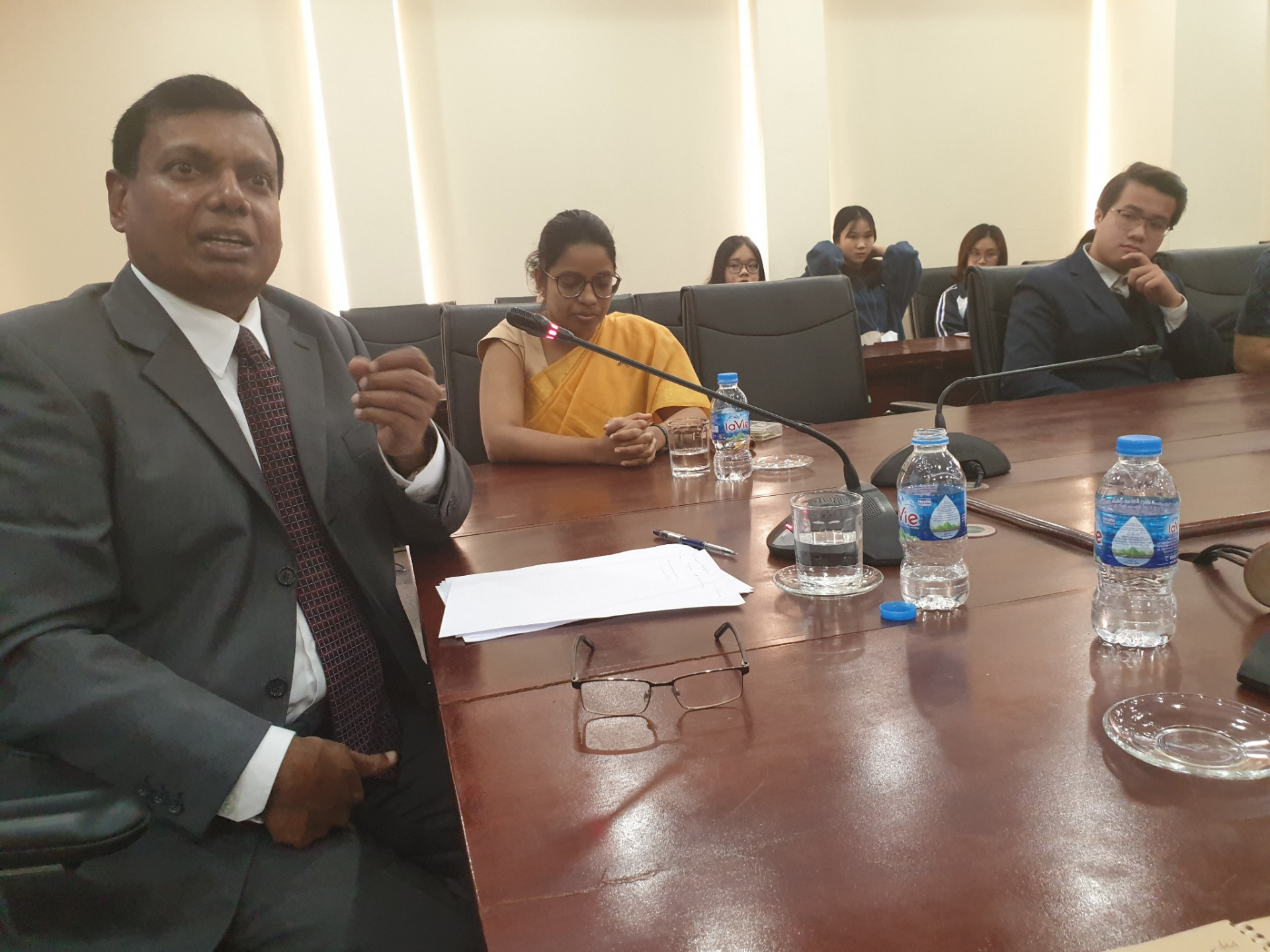 Ambassador Walpita Gamage Prasanna
Ambassador Walpita Gamage Prasanna
Sri Lanka is geographically located almost in the center of the Indian Ocean, surrounded by a 1,340km long coastline and interacts with and is influenced by countries and continents around this area such as India to the North, Africa to the West and Southeast Asian countries to the East. The geographical location has turned this country into a crossroads of economic, commercial, cultural and religious activities in history as well as in the present between the East and the West. The political system of this country is parliamentary, multi-party democracy influenced by the United Kingdom as well as neighboring India.
To harmonize relations with many countries around the Indian Ocean, including the major powers, Sri Lanka has maintained a relatively neutral foreign policy, politically non-aligned throughout the Cold War until today. The country's foreign policy consists of three pillars: national sovereignty, national security, and economic development; in which the economic development factor is supplemented by economic diplomacy, mobilizing international financial institutions to borrow capital for development.
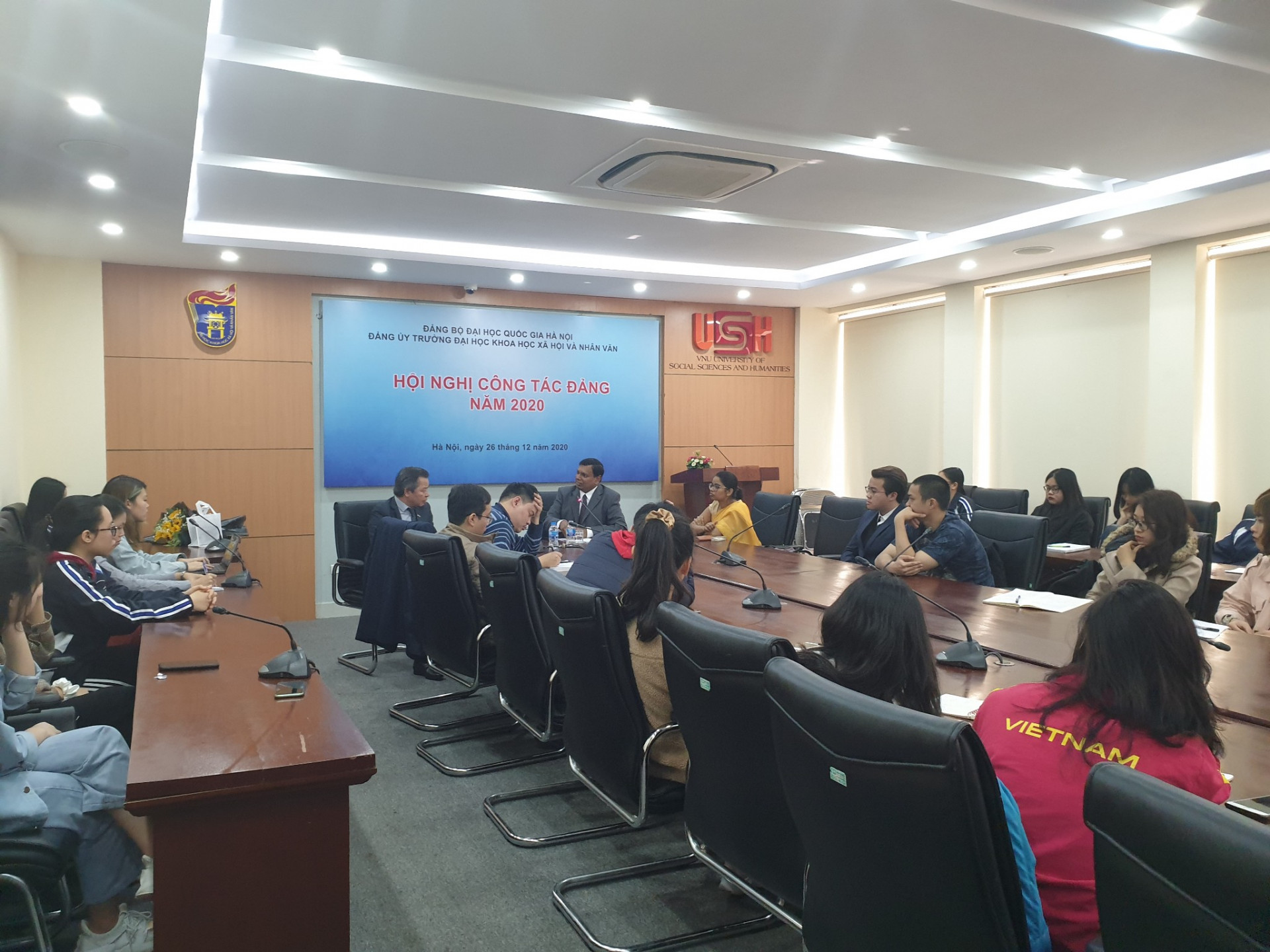 View of the hall
View of the hall
However, in the process of implementing the above-mentioned economic-oriented foreign policy, Sri Lanka also encountered many challenges, among which balancing relations between India, China and the West was the biggest challenge in international relations. The Sri Lankan government has skillfully turned to promote positive aspects, ease conflicts to take advantage of economic benefits and minimize conflicts with the parties. Like the countries of the Non-Aligned Movement, the important thing in Sri Lanka's foreign policy is to balance interactions, avoiding falling into the power vortex between the great powers.
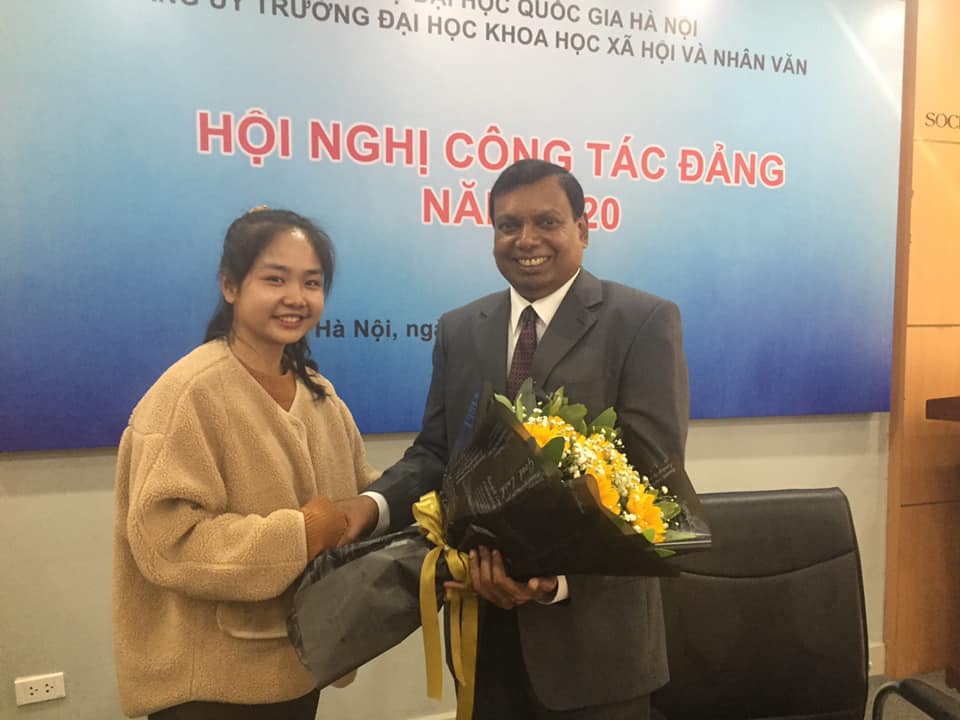 Student Nguyen My Dieu (International Relations Department - Faculty of International Studies) represented the students to present flowers to Ambassador Walpita Gamage Prasanna.
Student Nguyen My Dieu (International Relations Department - Faculty of International Studies) represented the students to present flowers to Ambassador Walpita Gamage Prasanna.
For Southeast Asian countries, Sri Lanka advocates contributing to the stable and peaceful development in the region through multilateral institutions such as the South Asian Association for Regional Cooperation (SAARS), the Bay of Bengal Initiative for Multi-Sectoral Technical and Economic Cooperation (BIMSTEC), the ASEAN Regional Forum (ARF), the ASEAN Treaty of Amity (ACD), the United Nations Convention on the Law of the Sea (UNCLOS). Sri Lanka wishes to contribute to the stability and peace of the region and emphasizes on trade development to strengthen the connection between countries.
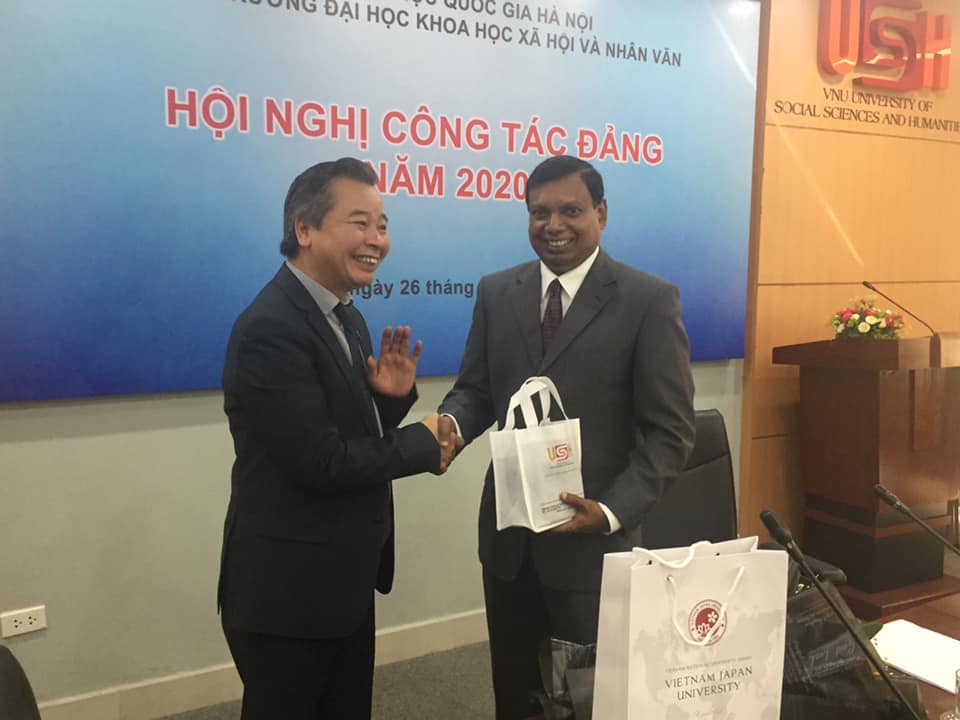 Prof. Dr. Pham Quang Minh presents gifts to Ambassador Walpita Gamage Prasanna
Prof. Dr. Pham Quang Minh presents gifts to Ambassador Walpita Gamage Prasanna
For Vietnam, Sri Lanka maintains a traditional and friendly relationship in the context of the two countries celebrating the 50th anniversary of the establishment of diplomatic relations (July 21, 1971). Over the past 50 years, the two countries have witnessed 53 high-level visits between leaders of the two sides; in which President Ho Chi Minh visited Sri Lanka three times in 1911, 1928, 1946. The trade turnover between the two countries in the year reached nearly 301 million USD and strives to reach 1 billion USD in the future. Currently, Sri Lanka has 14 investment projects in Vietnam, mainly in the textile and garment sector, and Sri Lankan companies create about 9,000 Vietnamese workers. In the coming time, Sri Lanka hopes to promote educational and cultural cooperation with Vietnam. Ambassador Walpita Gamage emphasized the role of the young generation, especially the generation born after 2000, in the future of bilateral relations between the two countries.
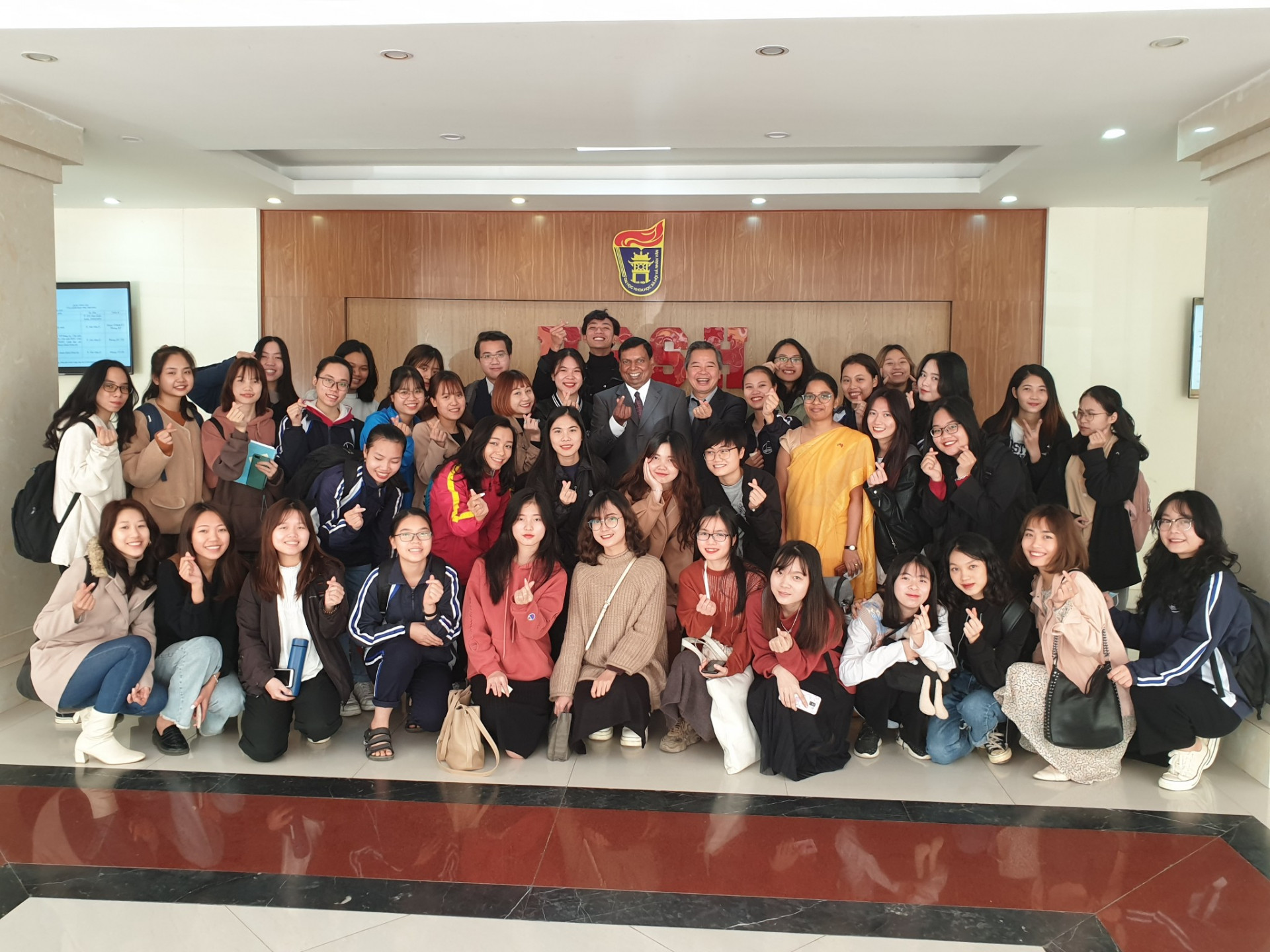 Ambassador Walpita Gamage Prasanna takes a photo with the School's students
Ambassador Walpita Gamage Prasanna takes a photo with the School's students
During the presentation, Ambassador Walpita Gamage Prasanna received questions from the University's students on issues such as the decision-making process on foreign policy in the Sri Lankan government, how to balance relations with major powers of Sri Lanka; the situation of foreign direct investment in Sri Lanka; plans to promote exchange and student relations between Vietnam and Sri Lanka; the situation of cooperation in textile trade between the two countries...




